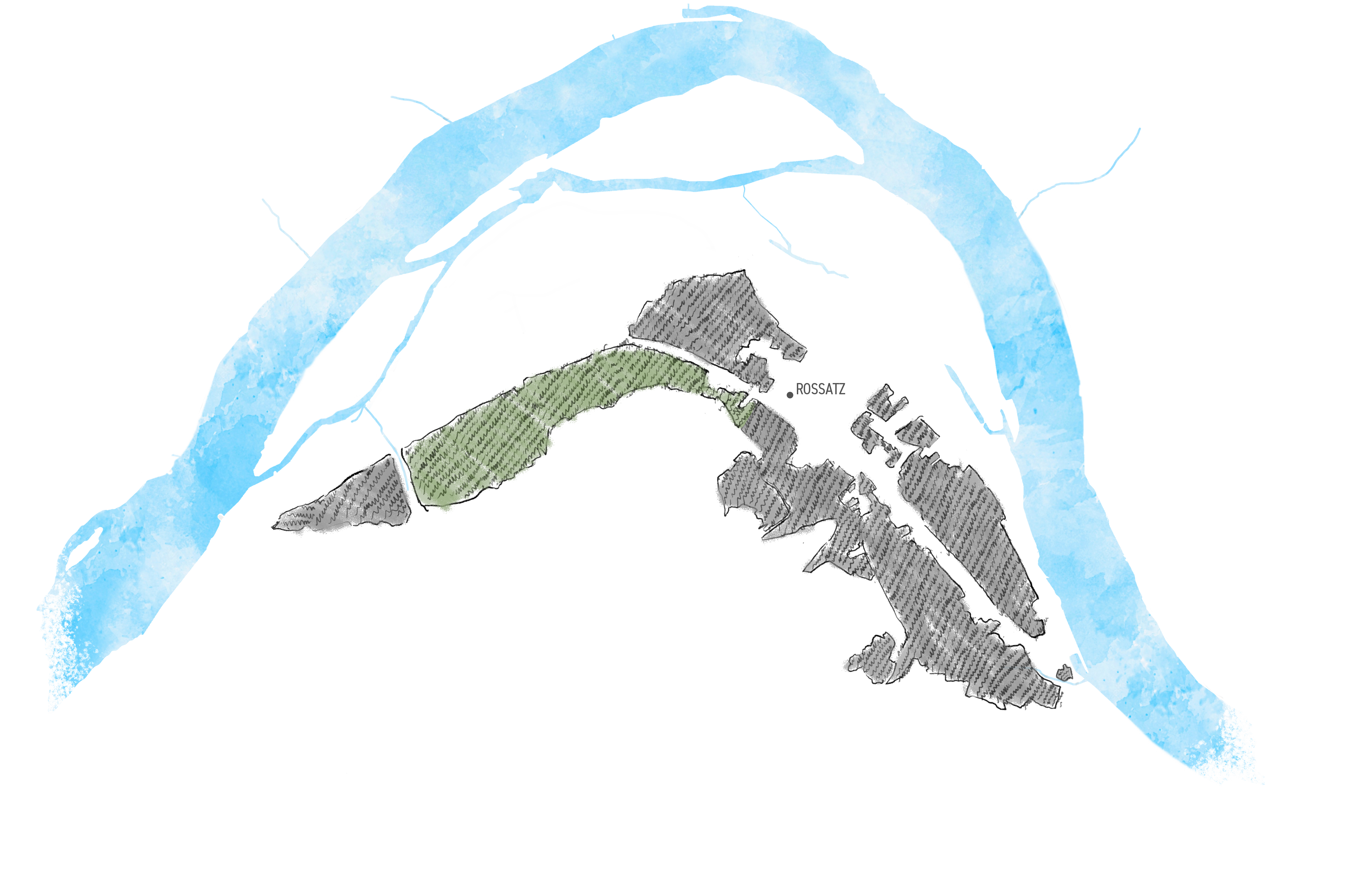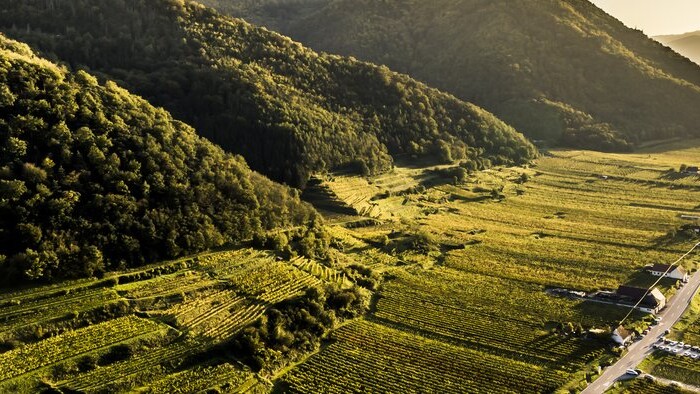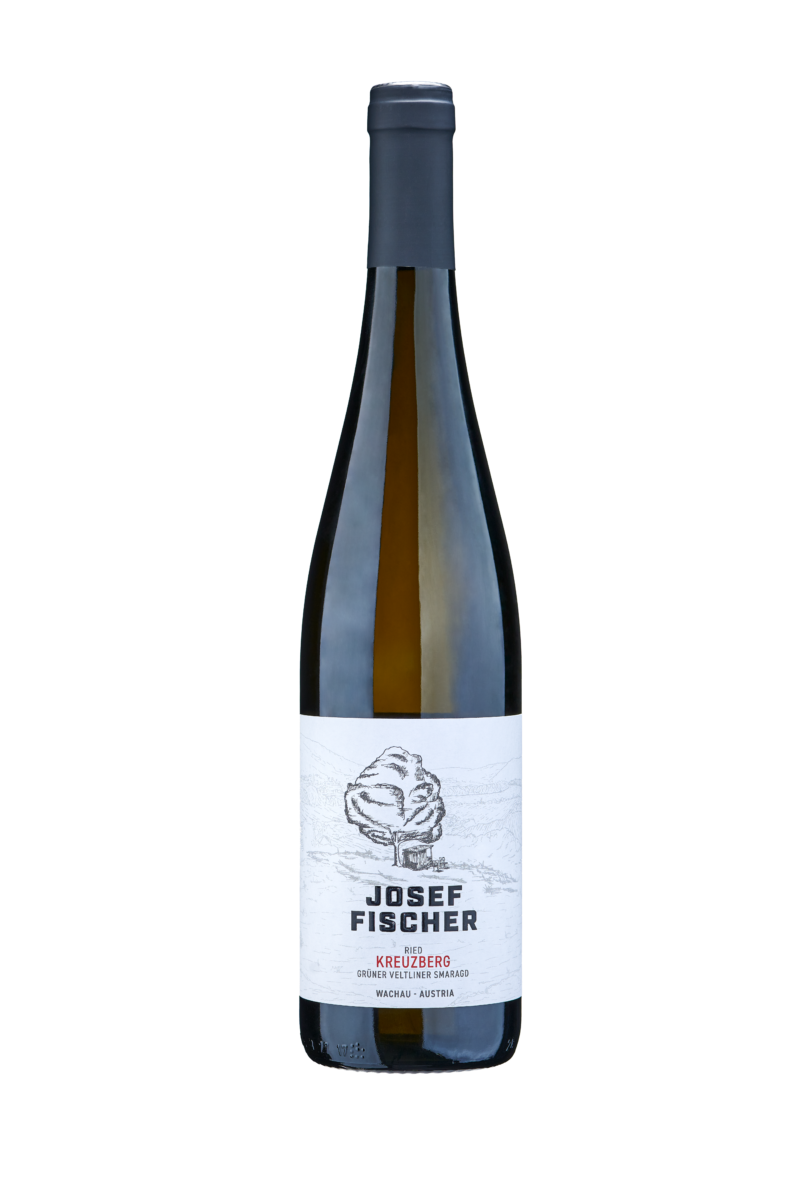At the same time, the Kreuzberg is home to a very diverse dry grassland, where rare orchid species are found as well as Steinfedergras (feather grass), which lends its name to the Vinea brand. Although they are facing north, their location on the most north-facing peak of the Dunkelstein Forest bathes the vineyards in sunshine all day long.
Town: Rossatz
Size in ha: 27,05
Altitude in m: 206 - 250
Aspect: N
Max. Slope in %: 59
Terraced vineyard: Partially
Distance to Danube in m: 222


The Soil
Two rock types, paragneiss and migmatite-amphibolite, occur at Kreuzberg near Rossatz. The profile was taken from the upper reaches dominated by dark-coloured amphibolite. The bedrock is covered with slope debris that has mostly been enriched with secondary carbonate from the former loess cover. Yellow feldspars are found among the large amphibolite fragments. The Kreuzberg vineyards face northwest, so that the vines thrive even in the hottest of summers. The long periods of evening sun provide enough warmth to ripen the grapes.



